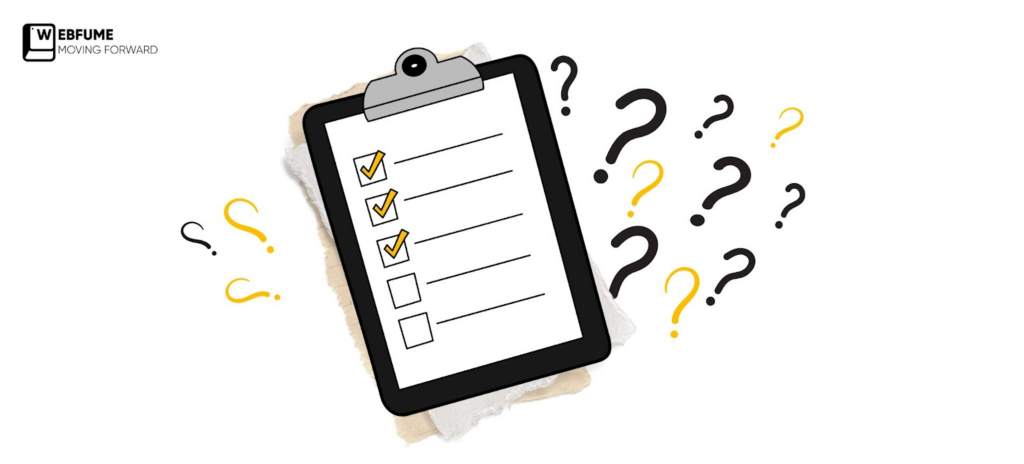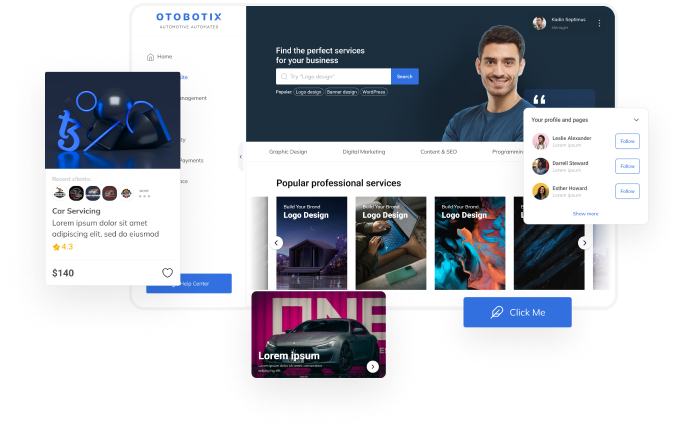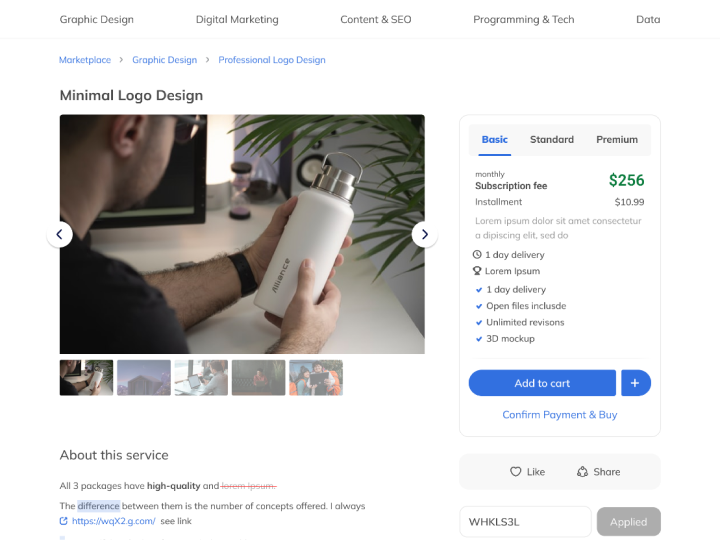Are you ready to make your next website design project run smoothly? A great place to start is by creating a comprehensive website design client onboarding questionnaire. This questionnaire will ensure you have all the details from your client upfront, allowing you to avoid any surprises or setbacks during the project. From contact information and business background to goals for the project, target audience, budget, timeline, and more – this questionnaire will cover it all. Creating your own questionnaire can be daunting, but don’t worry – we are here to help.
We have created a comprehensive website design client onboarding questionnaire that you can use with your next client. So get started today and make sure your next project runs smoothly!

What is a website design questionnaire?
A website design questionnaire is a document you create to help you gather essential information from your client before you begin designing their website. Ask the right questions to ensure that the website meets your client’s needs and expectations.
The questionnaire should include questions about the client’s business, target audience, preferred design style, content, and website functionality. It is also beneficial to ask for any ideas or suggestions for their new website’s overall look and feel.
By asking these questions and gathering as much information as possible before beginning the design process, you can ensure that your client will be satisfied with their final product.
Why do you require a website design questionnaire?
When designing a website, it is essential to have all the details. A comprehensive website design questionnaire can help you gather your client’s required information. This questionnaire should cover their business goals, target audience, budget information, expected timeline, and deliverables.
You may make sure that both you and your customer understand the objectives and specifications of the project by employing a website design questionnaire. It also helps to ensure that the project is starting on the right foot with all necessary information gathered upfront. In addition to questions about their goals and requirements, it’s essential to ask questions about their existing branding to ensure that your design complements their current identity. You can also include questions about any functionalities they would like implemented on the website so that you can better understand what they need from your services.
The answers gathered through the questionnaire will provide essential insights into how best to achieve your client’s desired outcome for their website design project.
How To Create A Website Design Questionnaire?
Creating a web design questionnaire is simple. However, you need to ensure that you ask the right questions. Let’s go through the ones we have listed for you!
1. What is the purpose of your website?
2. Who are the target users of your website?
3. What type of content will you have on your website?
4. What features do you need for your website?
5. How important is the user experience to you for this project?
6. Do you like the look and feel of any existing websites, if so please share the link?
7. Do you have any brand guidelines that must be followed in the design process?
8. Do you have any specifications of colors, fonts, and other design elements you want to be included in the design?
9. Do you have any images or logo that needs to be included in the website design?
10. Is there a timeline for completing this project and launching it online?
Would you like to build a new website or redesign an existing one?
Are you considering taking on a project but unsure how much work is involved? Asking your potential client if they need a complete website redesign or to build a new website from scratch is an essential step in understanding the scope of the project. This question allows you to estimate the amount of work required and set expectations for both parties, while also helping to identify potential roadblocks along the way. Get the full picture of the project and make sure you’re on the same page with your client from the start.
When considering a redesign, it is essential to use the current website as reference material to understand the client’s taste and what issues they would like addressed. Additionally, it can be helpful to create a comprehensive questionnaire for a website redesign that covers topics such as project goals, target audience, technical requirements, and other essential factors that need to be considered during the process.
This questionnaire offers valuable insights into what your client expects from their new website design and helps them make informed decisions about it. It is also vital to discuss timelines with clients so that they are aware of when their projects will be completed. This helps manage expectations and ensures that all deadlines are met to provide an optimal service experience.
Additionally, communication is vital throughout every step of the process – from initial conversations about scope and budget through to the final launch – to ensure everyone remains on track with their goals.
Tell Something About Your Business
By asking this question, you can start uncovering clients’ motivation for starting their businesses and their vision, mission statement, and values.
Suppose a client wants to display their origin story on their website. In that case, these questions can provide insight into what matters to the client and the audience.
This question can help you make sweeping changes to the design and can answer the following details:
- What features to include?
- How to structure web pages?
A photography website that prominently features your client’s work might require you to build something more like a lookbook than an average website. For example, if the client is a photographer, you can create something similar to a lookbook.
- What are the core values of your company?
Uncovering the core values of your client’s company can be a powerful tool in crafting a website that resonates with the desired audience. Core values are the essential principles an individual or business follows and can direct every aspect of web design—from the site’s purpose and visual elements to targeted viewers and additional functionalities. By understanding a company’s core values, you can create a website that reflects its mission and resonates with its ideal customers.
- What is the purpose of your site?
The client you’re working with might want the website for various reasons. Websites can inform the public, encourage communication, offer promotions, or provide business services like e-commerce or appointment scheduling. Consider the purpose of the website and the reason for creating one.
- What action can visitors perform on the website?
Websites are interactive pieces of content. Visitors to a webpage may view information, fill out forms, connect with other visitors, or make purchases. Determining what actions your visitors can perform on your website can help determine what features you need to install. It may allow you to create a more detailed website design before you create the final product.
What Are Your Services?
Are you looking to create a website that accurately reflects your brand and services? It’s essential to understand the products, services, and business model of your client. That’s why web designers and agencies go above and beyond to gain an in-depth understanding of their client’s operations.
For instance, if the client offers online products or services, the website must be equipped with e-commerce features. On the other hand, if the client offers an online subscription magazine or a job board requiring user registration, such features should be identified early to ensure the timeline and budget are realistic. Whatever the client’s requirements, it’s important to ensure that the website accurately reflects their brand and services. With the right understanding and approach, you can create a website that meets their needs and exceeds their expectations.
What Is Your Target Audience?
An effective website must be tailored to its specific target audience. Knowing the customer demographics, such as age, gender, and location, is essential, but other information, like job titles, industries, company sizes, etc., should also be considered.
It is also essential to assess the level of knowledge the ideal customer has about the product or solution offered by the brand to determine the user flow and deliverables (such as data visualizations, help guides, etc.). This will ensure that the website is relevant and valuable for visitors.
What Differentiates You From Your Competitors?
Most clients want you to create a website that sets them apart from their competitors and drives business growth. To do this, it’s essential to understand their unique selling point or competitive advantage. This could be anything from superior customer service to innovative products and services. By focusing on these areas, you can ensure your website is tailored to your client’s needs and provides an exceptional user experience that stands out from the crowd.
What Features Do You Require For Your Site?
This question depends on the client’s target audience, industry, and goals. For example, they should improve their site’s visibility in search engines, boost sales, increase engagement, or increase newsletter signups.
A website may need several functions or features, but deciding which ones can help you prioritize your work and help you make decisions. You can use the client’s core values and the website’s specific purpose to help you create a brief list of tasks you require the website to perform.
Some of the features may include:
- Button for Call To Action (CTA)
- Live Customer Support
- Integration of social media
- Cross-browser compatibility or responsiveness·
What Are Your Ideal Websites (And Why)?
Are you struggling to understand what your client wants for their website? With endless design possibilities, it can be hard to create something that meets their needs. But don’t get overwhelmed! Take some inspiration from your client’s favorite websites and use them to inform your design. This way, you can make sure you create something that your client will love..
What’s Your Budget?
Are you ready to jumpstart your website journey? Establishing a budget is a crucial part of the process, as it will determine the amount of work and resources that can be put into your website. Whether you have a minimal budget and need to employ a website builder or are looking for a more personalized option with a larger budget, we have the expertise to help you create the perfect website for your needs. We can even customize features of popular CMSs such as WordPress to create a unique experience for your users. Contact us today, and let’s get your website journey started!
What Is Your Desired Launch Date for the Website?
Set a timeline to ensure your team stays on track and your project is ready to launch on time! Carefully consider if you can commit to the deadline you set – this will help you avoid having to pull out halfway through the project. With the right timeline in place, your team can deliver the project efficiently, and you can pick the perfect launch date.
Do You Have Any Guidelines?
Are you creating designs for a client and want to make sure you get it right the first time? Understanding their existing branding guidelines and styling preferences can help make sure your designs are consistent and require fewer revisions. Ask your client about their current branding requirements so you can make sure your designs align with their vision!
What image do you want your site to Depict?
Creating an inviting public image for your website can help your brand or organization stand out and attract more visitors. By tapping into your client’s core values and desired characteristics, you can craft an image that resonates with them and makes them feel welcome. Whether it’s a sleek, modern design or a warm, inviting color palette, your website’s image can make a powerful statement about your client’s business and attract potential customers. With the right public image, your website can become a hub for engaging with customers and growing your business.
Do you have any brand elements to be used on your website?
If your client wants brand elements on his website, consider using them. Brand elements can be logos, taglines, color schemes, or images associated with the brand.
What are your technical requirements?
When it comes to getting your website up and running smoothly, it’s important to consider the technical specifications needed to meet your desired performance. Whether you’re creating a simple website with just a background and text, or something more complex with graphics, music, and user-generated content, the bandwidth, storage space, and processor speed required can vary greatly. Taking the time to analyze these technical requirements in advance can make sure your site runs at peak performance and meets your goals.
What web pages do you want to be designed?
A web page is a document that one can view on his web browser. Websites usually contain several pages, and determining the content of those pages is a crucial component of website design. You can design a webpage for each topic by asking your client all the information they want on the website.
How many visitors do you expect to have on your site?
A website’s visitor count can affect how well it functions and may require additional bandwidth or processing power. Ask your client if he anticipates a high traffic volume so you can prepare accordingly.
What pieces of essential information do you need to include on your site?
When designing a website, ask your client what key information he wants on the site to convey about his company, brand, or particular service. By doing so, you can plan for the information in advance and build the site accordingly.
Do you want your website to be mobile-friendly?
If your client wants a mobile-friendly website, you may need to create additional features or design the site in a way that is easy to navigate on all platforms. For that purpose, you need to ask this question to make necessary changes to the code.
What analytics do you use?
The analytics that your client uses may change how you format some of the web pages. That’s why it’s essential to add this question to make decisions accordingly.
Conclusion
With the help of a comprehensive website design client questionnaire, you can develop a website that meets your client’s expectations and demands. By gathering all the necessary information from the questionnaire, you can be sure that the design of your website will be functional and attractive for your client. Through this comprehensive understanding of the client’s wishes, you can create a website that is both visually appealing and easy to use. With this in mind, you can ensure that your website will provide a great user experience and meet the needs of your client.





 “Unlock the Limitless Possibilities of Cha..
“Unlock the Limitless Possibilities of Cha.. Unlock the Magic of Artificial Intelligence Stor..
Unlock the Magic of Artificial Intelligence Stor..








.png)


